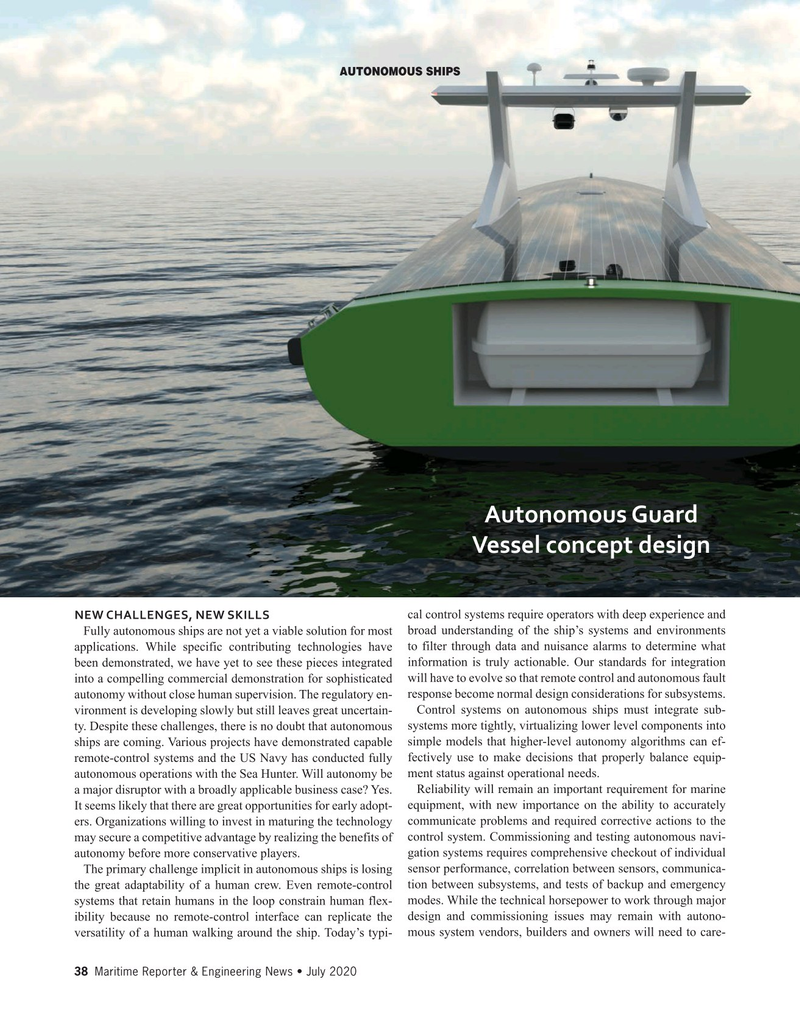
Page 38: of Maritime Reporter Magazine (July 2020)
Maritime Power Edition
Read this page in Pdf, Flash or Html5 edition of July 2020 Maritime Reporter Magazine
auTonoMous sHips
Autonomous guard vessel concept design New ChAlleNges, New skills cal control systems require operators with deep experience and
Fully autonomous ships are not yet a viable solution for most broad understanding of the ship’s systems and environments applications. While specific contributing technologies have to filter through data and nuisance alarms to determine what been demonstrated, we have yet to see these pieces integrated information is truly actionable. Our standards for integration into a compelling commercial demonstration for sophisticated will have to evolve so that remote control and autonomous fault autonomy without close human supervision. The regulatory en- response become normal design considerations for subsystems. vironment is developing slowly but still leaves great uncertain- Control systems on autonomous ships must integrate sub- ty. Despite these challenges, there is no doubt that autonomous systems more tightly, virtualizing lower level components into ships are coming. Various projects have demonstrated capable simple models that higher-level autonomy algorithms can ef- remote-control systems and the US Navy has conducted fully fectively use to make decisions that properly balance equip- autonomous operations with the Sea Hunter. Will autonomy be ment status against operational needs. a major disruptor with a broadly applicable business case? Yes. Reliability will remain an important requirement for marine
It seems likely that there are great opportunities for early adopt- equipment, with new importance on the ability to accurately ers. Organizations willing to invest in maturing the technology communicate problems and required corrective actions to the may secure a competitive advantage by realizing the benefits of control system. Commissioning and testing autonomous navi- autonomy before more conservative players. gation systems requires comprehensive checkout of individual
The primary challenge implicit in autonomous ships is losing sensor performance, correlation between sensors, communica- the great adaptability of a human crew. Even remote-control tion between subsystems, and tests of backup and emergency systems that retain humans in the loop constrain human flex- modes. While the technical horsepower to work through major ibility because no remote-control interface can replicate the design and commissioning issues may remain with autono- versatility of a human walking around the ship. Today’s typi- mous system vendors, builders and owners will need to care- 38 Maritime Reporter & Engineering News • July 2020

 37
37

 39
39
